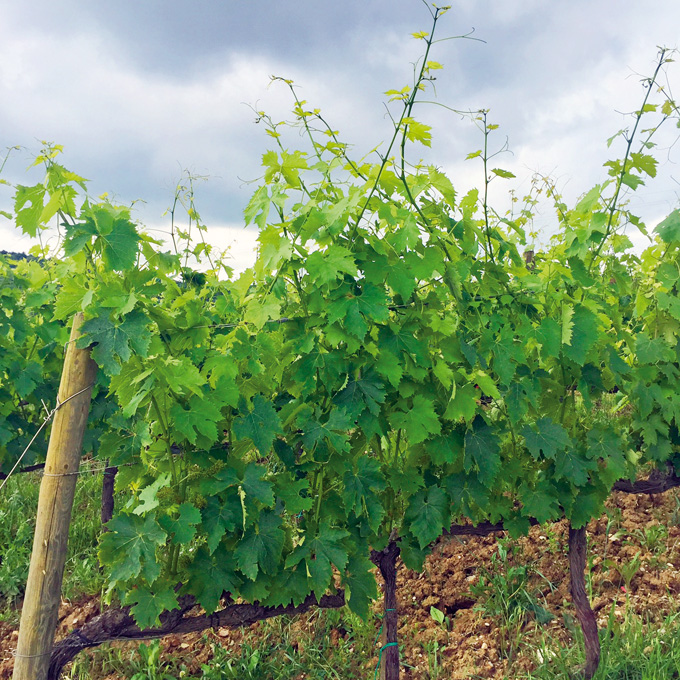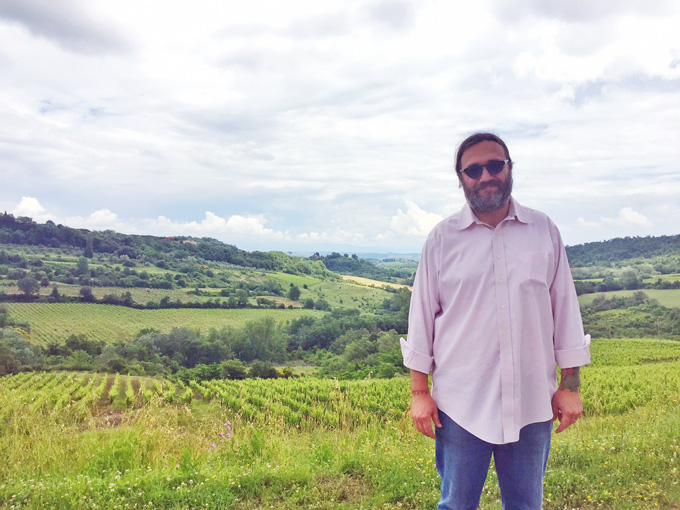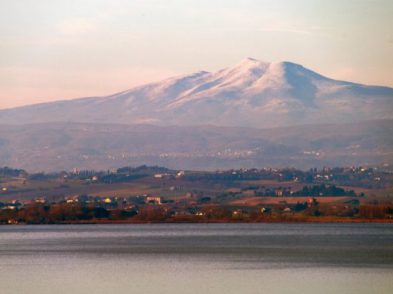Montepulciano, 70 miles southeast of Florence, where the Romans grew vines and named it “Mons Politanus”. In the eighteenth century the term “Nobile” appeared to reference both the wine and the nobles who consumed it. Vino Nobile di Montepulciano is a red wine made predominantly from Sangiovese, the great Tuscan grape, the key player behind Chianti and Brunello di Montalcino.

Vino Nobile is medium to full in body (somewhere between cordial and concentrated if thinking on a fruit juice scale), fragrantly floral, distinctively “violetty” and red, not black in colour. In its youth it can be quite ‘austere’, a tasting note I always enjoy in a wine. I was never austere in my youth, so I respect a wine that holds itself together firmly, with resolute tannins and refreshing, high acidity.
Michele Manelli is the owner of Salcheto, one of the most successful estates in Montepulciano. It is a success not just for the wines that he produces but for the methods he employs to make them. In the vineyards the approach is rigorously organic; in fact, they look a little wild. “A vineyard is not a garden, it cannot be perfect”.

Manelli was inspired to treat the vines organically by his mother’s practice of homeopathy for treating illnesses. She was “like a witch in that she made her own natural remedies,” he says. Manelli’s mother must have had something of the magical about her because her son has an equally powerful magnetism and energy. The winery he has constructed functions entirely independently of the region’s electrical network.
We walk underground into the cantina and I realise that all the light is natural. A system of tubes twists and turns, reflecting and retaining the light bringing it from the outside in. Salcheto use 50 percent less energy than a comparably sized conventional winery. In 2014, such efforts were recognised with the Sustainable Winery of the Year award from Gambero Rosso.
Energy conservation is considered on the bottling line, too. At Salcheto they have the lightest wine bottle in the world. Not only are heavy bottles deemed a waste of glass, but they require more energy to ship around the globe. Manelli calls it the Bordolese Toscanella—the shoulders of the bottle are more sloped than the classical Bordeaux bottle, but still narrower than a Burgundy bottle.
Manelli explains his introduction to wine. He had never planned to be a wine producer. He wanted to grow grapes in the healthiest way possible and sell them on to wine makers. It was viticulture, not viniculture that really interested him.
The vines, Manelli realised, were the ultimate storytellers. They have a memory, and not just of the year that you see written on the label, but of previous years, too. Of warm or wet winters, of frosts decades before or draught. They are intelligent plants that hold onto experiences and can relate them to the drinker over a glass.
In 1997 Manelli attended a tasting with Master of Wine Maureen Ashley and was surprised by how much there was to learn from what was inside a bottle. Previous to this tasting, wine was just “a colour” for him. It was white or red. Instantly he became fascinated by the culture of the wine world.
We taste the Vino Nobile, or I attempt to taste, but I can’t seem to take my nose from the glass. There is so much to smell, so many layers of aroma to consider. I resurface with a jolt when the discussion of price comes up. It is so cheap compared to the prices of equally high-quality Brunello di Montalcino and Chianti Classico Riservas.
The final wine we try is made using an old Tuscan method called “Governo”. Some of the grapes are not pressed after they are picked, but are left to dry partially for a couple of months to concentrate their sugars. When those partially dry grapes are pressed their sweet, thick juice is added back to the wine and contributes a richness, density and body to the wine. The Governo is glossy and bright, velvety in the mouth; it has exotic flavours, of black tea and ripe yellow peach. Like the Vino Nobile, this wine captivates the senses too, seeking and holding the attention.
With one foot out of the door, Manelli shows me his latest project Salco 2089, a blend of two vintages, the best Sangiovese of 2008 and 2009, two souls “merging into something superlative”. Manelli says the 08 is strong and linear and that the 09 is deep and romantic. “Maybe we have created the perfect blend for the future.”








